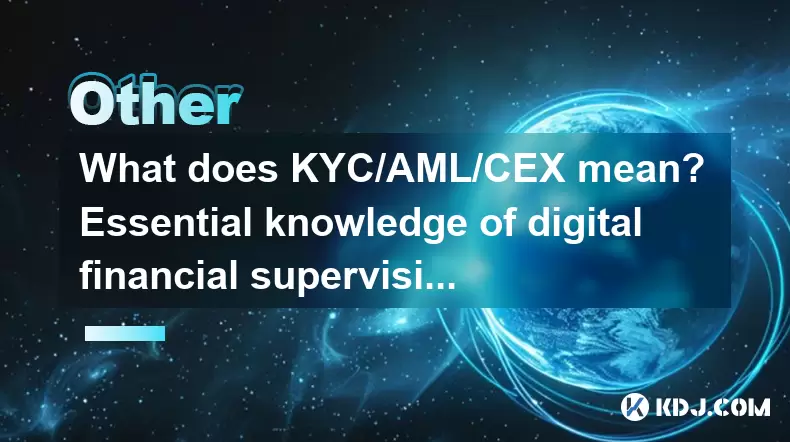-
 Bitcoin
Bitcoin $114800
-3.31% -
 Ethereum
Ethereum $3641
-5.84% -
 XRP
XRP $2.948
-6.36% -
 Tether USDt
Tether USDt $0.9998
-0.03% -
 BNB
BNB $772.4
-3.97% -
 Solana
Solana $169.1
-6.68% -
 USDC
USDC $0.9999
-0.01% -
 Dogecoin
Dogecoin $0.2056
-8.09% -
 TRON
TRON $0.3247
-0.18% -
 Cardano
Cardano $0.7239
-7.43% -
 Hyperliquid
Hyperliquid $39.71
-8.60% -
 Stellar
Stellar $0.3912
-7.84% -
 Sui
Sui $3.510
-10.17% -
 Chainlink
Chainlink $16.59
-8.03% -
 Bitcoin Cash
Bitcoin Cash $560.5
-3.65% -
 Hedera
Hedera $0.2464
-10.08% -
 Avalanche
Avalanche $22.03
-7.87% -
 Ethena USDe
Ethena USDe $1.001
-0.02% -
 UNUS SED LEO
UNUS SED LEO $8.947
0.21% -
 Toncoin
Toncoin $3.389
-2.58% -
 Litecoin
Litecoin $104.9
-5.23% -
 Shiba Inu
Shiba Inu $0.00001220
-6.67% -
 Polkadot
Polkadot $3.652
-6.10% -
 Uniswap
Uniswap $9.213
-9.05% -
 Monero
Monero $307.2
-2.93% -
 Dai
Dai $0.9998
-0.02% -
 Bitget Token
Bitget Token $4.367
-2.89% -
 Cronos
Cronos $0.1374
-6.80% -
 Pepe
Pepe $0.00001056
-8.65% -
 Aave
Aave $257.3
-7.31%
What does KYC/AML/CEX mean? Essential knowledge of digital financial supervision
KYC, AML, and CEX are crucial in crypto: KYC verifies identities, AML prevents illegal activities, and CEXs enforce these for security and compliance.
May 31, 2025 at 04:01 am

In the realm of digital finance, particularly within the cryptocurrency sector, understanding the concepts of KYC, AML, and CEX is crucial for anyone looking to engage with or operate within this space. These terms are foundational to the regulatory framework that governs the operations of financial services, including those dealing with cryptocurrencies. Let's delve into each of these concepts to gain a comprehensive understanding of their roles and implications.
Understanding KYC
KYC, or Know Your Customer, is a process by which businesses verify the identity of their clients. The primary goal of KYC is to prevent identity theft, financial fraud, money laundering, and terrorist financing. In the context of cryptocurrencies, KYC is often implemented by centralized exchanges (CEXs) and other financial service providers to comply with legal and regulatory requirements.
Why is KYC important in cryptocurrency? KYC helps to establish a level of trust and security within the cryptocurrency ecosystem. By verifying the identity of users, exchanges can mitigate the risk of fraudulent activities and comply with international financial regulations.
How is KYC implemented in a CEX? When a user attempts to register on a centralized exchange, they are typically required to provide personal information such as their full name, address, date of birth, and a government-issued ID. The exchange then verifies this information against public records or third-party databases.
What are the steps involved in KYC verification?
- Submit personal information: Users provide their personal details through the exchange's platform.
- Upload identification documents: Users upload a copy of a government-issued ID, such as a passport or driver's license.
- Verification process: The exchange verifies the provided information against official records.
- Approval or rejection: If the verification is successful, the user's account is approved; otherwise, it may be rejected or require further documentation.
Exploring AML
AML, or Anti-Money Laundering, refers to a set of procedures, laws, and regulations designed to stop the practice of generating income through illegal actions. In the cryptocurrency world, AML measures are crucial to prevent the use of digital currencies for illegal activities.
How does AML apply to cryptocurrencies? Cryptocurrencies, due to their decentralized nature and potential for anonymity, can be attractive to those looking to launder money. AML regulations ensure that exchanges and other financial service providers monitor transactions for suspicious activities and report them to the relevant authorities.
What are common AML practices in the crypto space?
- Transaction monitoring: Exchanges use software to monitor transactions for patterns indicative of money laundering.
- Reporting suspicious activities: If suspicious activities are detected, exchanges are required to report them to financial intelligence units.
- Customer due diligence: Continuous monitoring of customer activities to ensure compliance with AML regulations.
What are the consequences of non-compliance with AML regulations? Failure to comply with AML regulations can result in severe penalties, including fines, license revocation, and criminal charges. For individuals, it can lead to account suspension or closure on exchanges.
The Role of CEX
CEX, or Centralized Exchange, is a type of cryptocurrency exchange that is operated by a centralized organization. These exchanges act as intermediaries between buyers and sellers, facilitating the trading of cryptocurrencies.
How do CEXs relate to KYC and AML? Centralized exchanges are often the primary enforcers of KYC and AML policies within the cryptocurrency ecosystem. They are required to implement these measures to comply with regulatory standards and protect their users.
What are the advantages of using a CEX?
- Security: CEXs often have robust security measures in place to protect user funds and data.
- Liquidity: Centralized exchanges typically offer higher liquidity, making it easier to buy and sell cryptocurrencies.
- User-friendly interface: CEXs often provide a more user-friendly experience compared to decentralized exchanges.
What are the potential drawbacks of CEXs?
- Centralization risk: Since CEXs are operated by a central entity, they are susceptible to hacking and regulatory actions.
- Privacy concerns: The requirement for KYC can be seen as an invasion of privacy by some users.
The Impact of KYC/AML on Cryptocurrency Users
The implementation of KYC and AML policies has a significant impact on cryptocurrency users. While these measures enhance security and compliance, they also introduce certain challenges and considerations.
Enhanced security and trust: By verifying the identity of users and monitoring transactions, KYC and AML policies help to create a safer environment for cryptocurrency transactions.
Compliance with regulations: Users must be aware that engaging with cryptocurrencies on regulated platforms requires adherence to KYC and AML procedures.
Privacy and anonymity concerns: Some users value the anonymity that cryptocurrencies can offer, and the requirement for KYC can be seen as a compromise to this privacy.
Access to services: In some cases, users who cannot or choose not to comply with KYC requirements may find their access to certain services limited.
Navigating KYC/AML Compliance as a Cryptocurrency User
For users looking to engage with cryptocurrencies while navigating KYC and AML compliance, there are several steps and considerations to keep in mind.
Choose a reputable exchange: Select a centralized exchange that is known for its compliance with KYC and AML regulations and has a strong track record of security.
Prepare necessary documentation: Before attempting to register on an exchange, gather all required documents, such as a government-issued ID and proof of address.
Understand the verification process: Familiarize yourself with the KYC verification process of the chosen exchange to ensure a smooth and efficient experience.
Monitor your account activity: Regularly review your account activity to ensure compliance with AML policies and to detect any unauthorized transactions.
Stay informed about regulatory changes: Keep up to date with changes in KYC and AML regulations that may affect your use of cryptocurrencies.
The Regulatory Landscape and KYC/AML
The regulatory landscape for cryptocurrencies is constantly evolving, with different jurisdictions implementing varying levels of KYC and AML requirements. Understanding these regulations is essential for both users and operators within the cryptocurrency space.
Global variations in KYC/AML regulations: Different countries have different approaches to regulating cryptocurrencies, with some being more stringent than others in their KYC and AML requirements.
Impact on cross-border transactions: The varying regulatory environments can complicate cross-border cryptocurrency transactions, requiring users to be aware of the regulations in both the sending and receiving countries.
Role of international organizations: Organizations such as the Financial Action Task Force (FATF) play a significant role in setting global standards for KYC and AML in the cryptocurrency sector.
Compliance challenges for businesses: Cryptocurrency businesses face the challenge of navigating these diverse regulatory landscapes while ensuring compliance with KYC and AML standards.
Frequently Asked Questions
Q: Can I use cryptocurrencies without going through KYC/AML processes?
A: While some decentralized exchanges and peer-to-peer platforms may allow for transactions without KYC/AML, most reputable centralized exchanges require users to go through these processes to comply with regulations. Engaging with platforms that do not enforce KYC/AML can pose significant risks, including fraud and regulatory scrutiny.
Q: How do KYC/AML policies affect the privacy of cryptocurrency users?
A: KYC/AML policies can impact user privacy by requiring the submission of personal information to centralized exchanges. While these measures are designed to enhance security and compliance, they can be seen as a compromise to the anonymity that some users seek in cryptocurrencies.
Q: Are there any alternatives to centralized exchanges that do not require KYC/AML?
A: Yes, decentralized exchanges (DEXs) and certain peer-to-peer platforms may offer alternatives to centralized exchanges, often with less stringent KYC/AML requirements. However, these platforms may have lower liquidity and different security considerations compared to CEXs.
Q: How can I ensure my personal information is secure when submitting it for KYC verification?
A: To ensure the security of your personal information during KYC verification, choose reputable exchanges with strong security measures in place. Look for exchanges that use encryption for data transmission, have clear privacy policies, and are transparent about their security practices. Additionally, always use strong, unique passwords and enable two-factor authentication where available.
Disclaimer:info@kdj.com
The information provided is not trading advice. kdj.com does not assume any responsibility for any investments made based on the information provided in this article. Cryptocurrencies are highly volatile and it is highly recommended that you invest with caution after thorough research!
If you believe that the content used on this website infringes your copyright, please contact us immediately (info@kdj.com) and we will delete it promptly.
- Bitcoin, Ethereum, and Investor Behavior: A New York Minute on Crypto Trends
- 2025-08-01 15:10:12
- Tether's Q2 Triumph: USDT Supply Soars Amidst Profit Surge!
- 2025-08-01 15:10:12
- Ethereum ETF Holdings: A Corporate Treasury Revolution?
- 2025-08-01 15:30:12
- Ethereum's Wild Ride: Funding Rates, Price Drops, and Retail to the Rescue!
- 2025-08-01 15:30:12
- Ethereum Under Pressure: Crypto Market Drop Explained
- 2025-08-01 15:35:11
- Ethereum ETF Mania: Inflows Surge, Market Rises, What's Next?
- 2025-08-01 15:35:11
Related knowledge

How to start a business using blockchain?
Jul 28,2025 at 12:36am
Understanding the Basics of Blockchain TechnologyBefore diving into the process of starting a business using blockchain, it's crucial to understand wh...

What is a token on the blockchain?
Jul 21,2025 at 07:00am
Understanding the Concept of a TokenIn the realm of blockchain technology, a token is a digital representation of an asset or utility that exists on a...

Can blockchain be used for identity verification?
Jul 18,2025 at 02:14pm
Understanding Identity Verification in the Digital AgeIn the modern digital landscape, identity verification has become a critical component for ensur...

What is a consensus mechanism in blockchain?
Jul 21,2025 at 03:01am
Understanding the Basics of Consensus MechanismsA consensus mechanism is a critical component of any blockchain network. It refers to the process by w...

How to explain blockchain to someone with no tech background?
Jul 18,2025 at 11:08pm
Understanding the Basics of BlockchainTo explain blockchain to someone with no tech background, it's essential to start with simple analogies and avoi...

Who invented blockchain technology?
Jul 23,2025 at 01:28am
Origins of Blockchain TechnologyBlockchain technology did not emerge from a single inventor or institution. Instead, it evolved through a series of ac...

How to start a business using blockchain?
Jul 28,2025 at 12:36am
Understanding the Basics of Blockchain TechnologyBefore diving into the process of starting a business using blockchain, it's crucial to understand wh...

What is a token on the blockchain?
Jul 21,2025 at 07:00am
Understanding the Concept of a TokenIn the realm of blockchain technology, a token is a digital representation of an asset or utility that exists on a...

Can blockchain be used for identity verification?
Jul 18,2025 at 02:14pm
Understanding Identity Verification in the Digital AgeIn the modern digital landscape, identity verification has become a critical component for ensur...

What is a consensus mechanism in blockchain?
Jul 21,2025 at 03:01am
Understanding the Basics of Consensus MechanismsA consensus mechanism is a critical component of any blockchain network. It refers to the process by w...

How to explain blockchain to someone with no tech background?
Jul 18,2025 at 11:08pm
Understanding the Basics of BlockchainTo explain blockchain to someone with no tech background, it's essential to start with simple analogies and avoi...

Who invented blockchain technology?
Jul 23,2025 at 01:28am
Origins of Blockchain TechnologyBlockchain technology did not emerge from a single inventor or institution. Instead, it evolved through a series of ac...
See all articles

























































































